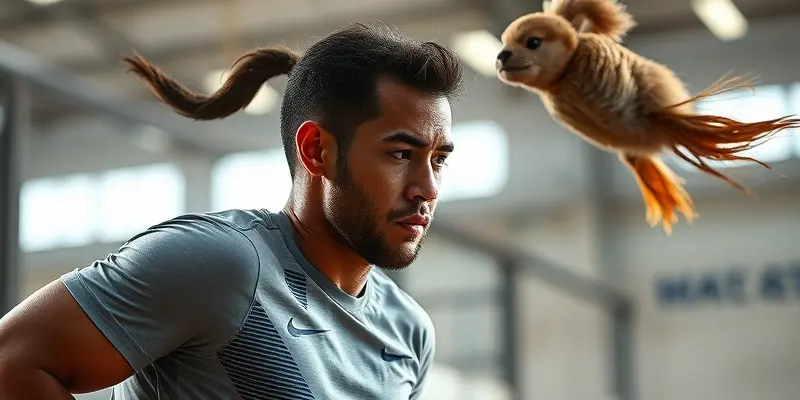Recovery & Injury: Optimizing Recovery with Child Motor Skill Drills
When it comes to overcoming injuries and minimizing downtime, most fitness enthusiasts think of high-tech gadgets or rigorous rehab plans. What if one of the smartest approaches is rooted in the simplest activities—child motor skill drills? As a fitness expert with over a decade of experience in sports training and rehabilitation, I’ve seen firsthand how foundational movement practices, often used for kids, unlock faster recovery and long-term resilience for athletes and health seekers of all ages.
What Are Motor Skills and Why Do They Matter?
Motor skills fall into two categories:
- Gross motor skills involve large movements using the arms, legs, or entire body. Think jumping, running, or balancing.
- Fine motor skills use smaller muscles for actions like gripping, threading, or writing.
Why focus on these? Strong motor skills support every aspect of movement—whether you’re sprinting on a soccer field, setting a new deadlift PR, or simply navigating stairs after an injury. By improving both gross and fine motor control, you lower your risk of strains, sprains, and chronic overuse injuries.
Top Motor Skill Drills: Child-Inspired, Adult-Applicable
Gross Motor Drills
- Obstacle Courses: Set up cones, boxes, or bands to create a path. Climbing, hopping, and crawling challenge balance, coordination, and strength. Great for anyone from youth athletes to adults rehabbing knee or ankle injuries.
- Animal Walks: Mimic bears, crabs, or frogs to develop full-body strength and joint mobility.
- Dance and Movement Games: Follow-along dance sessions or “Simon Says” promote agility and cardiovascular health. These inject fun into warm-ups or low-impact recovery days.
- Line Hopping: Jumping forwards, backwards, or sideways over a taped line enhances balance and lower limb control without heavy loads—ideal for injury prevention.
Fine Motor Drills
- Bead Stringing or Picking Up Small Objects: Great for rehabbing hand, wrist, or finger injuries. They improve grip strength and dexterity—foundational skills for golfers, climbers, or even desk workers.
- Clothespin Squeezes: Build forearm and finger endurance crucial for sports like tennis or baseball.
- Play Putty Work: Squeezing, rolling, or shaping therapy putty strengthens hand muscles and aids injury recovery.
These drills aren’t just for kids. Integrating them into adult rehab and training routines fosters better neuromuscular control, making you less prone to repeat injuries.
Injury Prevention and Recovery Strategies
Motor skill drills are most effective when:
- Progressive: Start with simple movements and add complexity as strength returns.
- Balanced: Mix gross and fine skill activities for total-body coordination and muscle symmetry.
- Safe: Choose soft surfaces and controlled environments—this is especially important during early-stage recovery.
- Paired with Active Warm-Ups/Cool-Downs: Light marching, stretching, or dynamic dance routines prep the body for more focused drills and help flush out waste products post-workout.
These strategies—borrowed from physical therapy and youth training—translate into smarter, lower-risk recovery for adults. For more comprehensive steps, consider our injury recovery checklist, which complements these movement approaches by providing detailed guidance to speed healing and reduce setbacks.
Nutrition and Tools for Healing
Optimal recovery is holistic. Pair your skill drills with:
- Quality Nutrition: Lean proteins for muscle repair, fruits and veggies to combat inflammation.
- Hydration: Consistent water intake keeps recovery on track and aids concentration.
- Recovery Aids: Foam rollers and ice packs reduce soreness; therapy putty helps hands regain strength after injuries.
Don’t underestimate these basics—they’re as critical as your exercise plan.
Staying Motivated During Recovery
Kids are experts at finding joy in movement. Adults can benefit from this, too!
- Game-ify Your Rehab: Use short, varied drills that challenge you mentally and physically.
- Set Small, Achievable Goals: Celebrate milestones—big and small—to maintain momentum.
- Keep It Playful: The more enjoyable your drills, the more consistent your recovery efforts will be.
Conclusion
Child motor skill drills offer powerful lessons for fitness enthusiasts, athletes, and anyone recovering from injury. They foster coordination, restore mobility, and build stronger bodies—at any age. By blending these playful, foundational activities with smart nutrition and recovery strategies, you can turn the process of getting back on your feet into something both effective and enjoyable.
Ready to outsmart injury and recover like a pro? Try adding a dose of childhood skills to your next routine—you’ll be amazed at the results!
This article is written by the lead content writer at GymPulse, combining hands-on expertise with the latest physical therapy and sports science. For more actionable tips, check out our related guides or connect with our community.

